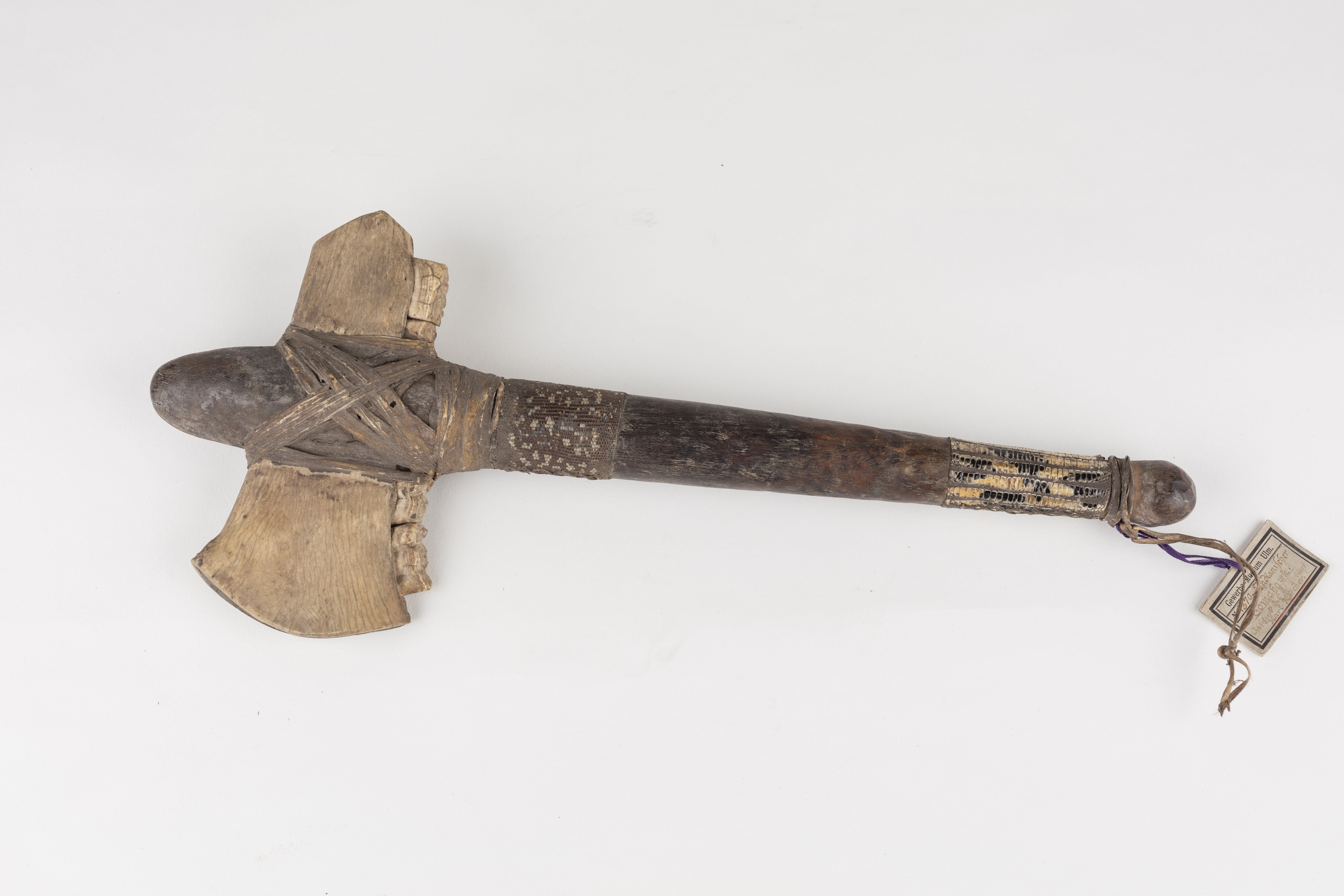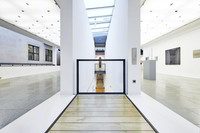Axe with a wooden handle that tapers off and ends in a pommel. The head section consists of a horse's jawbone with teeth. The bone is fixed to the shaft by bast fibre. The lower end of the handle, above the pommel, is wrapped with a leather band that forms a loop. Around the handle two cuffs from different snakeskins are sewed. Although the blade has the form of an axe, it is blunt and it is assumed that the weapon was used rather as a club or a mace.
The axe comes probably from South America. It could origin in the Gran Chaco region and was donated to the Gewerbemuseum (Museum of Applied Arts) Ulm in 1919 by Karl Kärcher (1882 - 1968). Kärcher was teacher of industrial arts in Ulm (1908 - 1918) and from 1918 on director of the industrial school in Bad Cannstatt. From where and when he obtained the object is not clarified.
en

